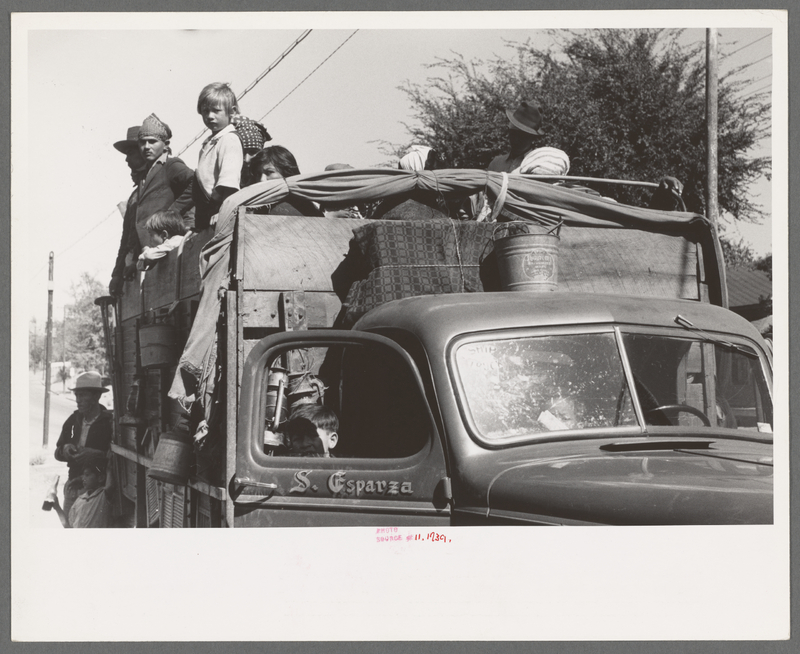Introduction
“La Lucha: A History of Hispanic Migrant Farm Workers” uncovers the experiences and legacies of Mexican field laborers of the 20th and 21st centuries. The objects in this exhibit include photos, videos, oral interviews, artworks, and other personal artifacts from field workers, their families, and their leaders. Several artifacts date back to the 1930s when large populations of Mexican citizens first migrated to the U.S in search of employment. Photographs taken by Dorothea Lange from 1935 to 1937 document her encounters with migrant workers as she traveled across the Southwest to learn more about their struggles. Other artifacts from the late 1990s and early 2000s reflect the aftermath of political movements that fought to improve the working conditions of all migrant workers. One key figure highlighted throughout this exhibit is Cesar Chavez, a Mexican-American political activist who founded the United Farm Workers association in the 1960s. You will hear oral interviews with Chavez as he discusses the most pressing issues facing Hispanic migrant laborers, such as the use of deadly pesticides. Other artifacts call attention to the workers themselves, including documentary footage taken by the UFW from the fields of the United States’ largest agricultural centers. This exhibit is designed to highlight both the struggles and triumphs of America’s often forgotten labor force. It celebrates their contributions to political, social, and labor history, as well as their importance to the culture and identity of the American Southwest. Listen to their stories, examine their photographs, and continue their fight—la lucha.
